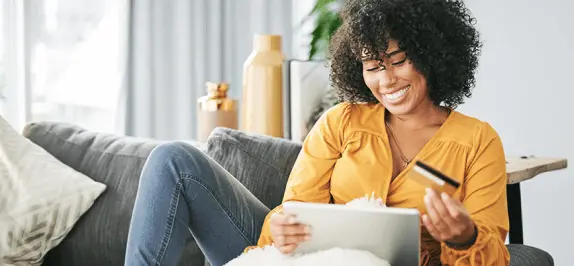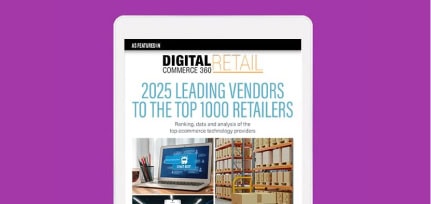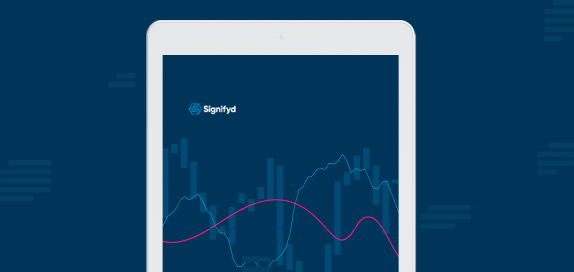Kumar N. Senthil has seen a lot, having worked on key projects for Microsoft, Groupon and now Samsung, as global head of products, ecommerce.
But like the rest of us, he’s never seen anything like COVID-19, the global pandemic that has shut down vast segments of the economy and changed consumer habits. For retailers and brands like Samsung, COVID-19 has produced tremendous complications and potential.
“At this time, there is an opportunity,” Senthil said. “There is growth in the ecommerce sector. It comes with challenges as well.”

Kumar N. Senthil
In fact, Senthil spent 45 minutes dissecting the opportunities and challenges during a stay-at-home fireside chat with Signifyd Co-Founder and Chief Product Officer Michael Liberty.
The conversation was the centerpiece of Signifyd’s first virtual FLOW Happy Hour — an online event joined by nearly 100 retail professionals, who sipped prosecco, syrahs and microbrews while posing questions and chatting with each other via Zoom and Slack before and after the presentation.
- COVID-19 has caused a massive shift in consumer habits, leading to increased ecommerce sales and a wave of shoppers new to ecommerce.
- The valuable opportunity for online retailers comes with plenty of challenges around fulfillment, affordability of products and the disruption of working from home, Samsung’s Kumar N. Senthil says.
- Customer experience, including varied options like BOPIS and curbside pickup are going to be even more important in a post-COVID-19 world.
Ecommerce sales soar during COVID-19 shelter-at-home
The ecommerce opportunity created by shelter-at-home orders and store closings has been well documented over the past two months. Ecommerce sales are up 56% since the early days of COVID-19, according to Signifyd’s Ecommerce Pulse data. And Samsung’s vertical, electronics, has seen sales increase 72%, the data says.
“We don’t see this trend stopping in the short term,” Signifyd Vice President, Operations and Corporate Development J Bennett told FLOW attendees in a presentation to kick off the event. “It’s probably becoming a new normal.”
While Bennett added that it’s hard to predict exactly what will happen in the long-term, post-COVID-19, he underscored a trend as important as the increase in ecommerce sales itself. The shutdown of most brick-and-mortar retailers has created a cohort of new online shoppers, who, data from Signifyd’s Commerce Network shows, are building an online buying habit.
“What we see is that the new users are continuing to buy and come to the channel,” Bennett said. “What we’re seeing is they are returning again and buying more often.”
Amazon’s stumbles have opened new opportunities for other retailers
In addition to the need to buy online and the rush of new online shoppers, the opportunity for retailers has been made even bigger by Amazon’s early stumbles.
“Everyone is buckling under this incredible load,” Liberty said, noting that Signifyd data shows average fulfillment times are growing. “With that said, part of the reason this is happening is Amazon has had its struggles. So, people are turning away and looking for other retailers to fill that gap. There is an opportunity right now for other retailers to capture new users, if they deliver on that promise of fast delivery.”
But all that opportunity comes with some particular challenges in the midst of a pandemic, Senthil explained. Consider fulfillment at a time when warehouse workers need to be protected.
“If anybody tests positive, the whole shift goes offline for 10 days. They are self quarantined,” he added. “We operate on three shifts now. We spread people apart. We reduce shipments per shift, so we have social distancing and precautions.”
Samsung Electronics, a massive global company, began expanding its fulfillment capabilities as soon as it saw Chinese and South Korean citizens falling ill. The lesson for retailers, Senthil said, is that it’s important to have a plan B, one that relies on more than one warehouse.
The financial health of consumers could be another headwind in the time of COVID-19, he added.
“If your product is an expensive product — like phones and TVs — the key here is to make it affordable,” Senthil said. “Come up with a mechanism with which you can make it affordable.”
Retailers should consider subscriptions, leasing or plans that allow buyers to pay over time — an arrangement, Senthil said, that research shows was preferred by millennials even before the pandemic.
A third challenge is one that many businesses are familiar with.
The whole world is working from home
“It’s pretty much across the world, everybody is working from home,” Senthil said. “It’s long hours. What I’m realizing is, none of us know how to work from home. The day starts at 7 o’clock for me and it ends at 10 or 10:30. There is no break between meetings.”
Throw in a workforce that is literally worldwide and theoretically, the work day never ends.
Senthil said he is working on reducing the number of meetings he attends to allow for time to get other work done. But he acknowledged that the difficulty balancing work and life while working from home appears to be nearly universal, based on his conversations.
And so, what is next? What will shopping and retail look like as the world emerges from COVID-19 lockdown and begins its journey to what presumably will be some semblance of normalcy?
“Number one is logistics. There is a lot of innovation that is going to happen in logistics,” Senthil predicted. “The expectation from the customers now is, they want instant gratification.”
What once was the expectation of three or four-day delivery is now next-day or same-day, he said.
“Because of that, I think there is going to be a trend where this online and offline retail is going to blend. Order online pick up in store is going to be more and more prevalent.”
Curbside pick up is leading an omnichannel renaissance
One need only look at the increase in curbside pick up of online orders to see the genesis of the omnichannel acceleration and expansion.
“The second piece,” Senthil continued, “is the customer experience itself. There are still a lot of websites that ask the customer to sign up. Friction in checkout is going to be a killer in business. That’s one of the areas where innovation is going to happen. Everything fast, fast, — that’s where the innovation is going to be.”
The unprecedented experience of living through a pandemic is also likely to accelerate a pre-COVID-19 trend: Increasingly, consumers like to shop at retailers that do good.
Customers are going to do business with companies that have been socially responsible or conscious,” Senthil said. “Because people are already upset about companies that don’t do much or don’t do enough to support people in general.”
Senthil said consumers today pay close attention to how companies behave, including how they treat their employees. And they remember who did what when the world was in need.
“No one is asking you to spend billions and billions,” he said. “But be responsible. Do something meaningful when the society is in need. That I would say is a key. Winners and losers will be decided by that.”
And while he expects some of the growth in online shopping to hold after the pandemic, Senthil said he was confident that consumers will go back to brick-and-mortar stores, particularly to support local merchants.
“I’m not saying there won’t be issues,” he said. “People are going to be wearing masks. People are going to be using gloves when they venture out. Smaller stores will have challenges and they will have to adjust to this new normal. As we get this vaccine or a cure, it will become a more seamless transition, but until then, it’s going to be a difficult time for retailers.”
Liberty suggested that merchants will find solutions, such as curbside pickup or scheduling times for shoppers to browse and buy in stores.
“It’s going to be a time,” he said. “of major innovation.
Learn how successful retailers operate buy online pick up in store or at the curb. Download “Risk & Reward: Buy Online Pick Up in Store.”








